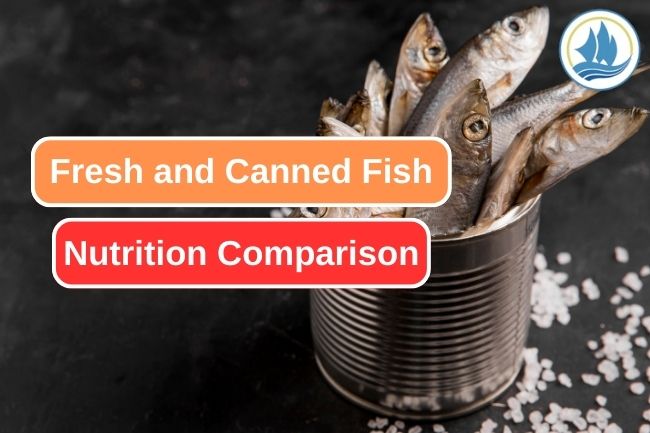Comparing Nutritional Profiles: Fresh Fish and Canned Fish
By. Nevanda - 10 Aug 2023
kelolalaut.com - Fresh fish and canned fish can have differences in their nutritional content due to various factors, including processing methods, storage, and added ingredients. Here are some key differences to consider:
1. Processing and Cooking Methods
- Fresh Fish: Fresh fish is typically unprocessed and has not undergone any cooking or preservation methods before consumption.
- Canned Fish: Canned fish is usually cooked and processed before being canned, which can affect the nutritional profile. It is often cooked in its own juices or with added ingredients.
2. Nutrient Retention
- Fresh Fish: Fresh fish retains its natural nutrients, including vitamins (such as vitamin D and B vitamins) and minerals (such as iodine and selenium).
- Canned Fish: The canning process can lead to some loss of heat-sensitive nutrients like certain B vitamins and vitamin C. However, canned fish can still be a good source of protein, healthy fats, and minerals.
3. Omega-3 Fatty Acids
- Fresh Fish: Certain types of fresh fish, such as salmon, mackerel, and sardines, are known for their high omega-3 fatty acid content, which is beneficial for heart health, brain function, and reducing inflammation.
- Canned Fish: Canned fish can still contain omega-3 fatty acids, but the levels might be slightly lower due to the canning process and potential loss of some nutrients.
4. Sodium Content
- Fresh Fish: Fresh fish is naturally low in sodium.
- Canned Fish: Canned fish may have added salt or brine for preservation, which can significantly increase the sodium content. Opt for low-sodium or no-salt-added canned fish options if you're concerned about sodium intake.
5. Convenience and Longevity
- Fresh Fish: Fresh fish has a shorter shelf life and requires proper storage and prompt consumption to maintain its quality and nutritional value.
- Canned Fish: Canned fish has a longer shelf life and can be stored at room temperature. This makes it a convenient option for quick meals and emergency situations.
Read also: A Deep Dive into High-Fat Marine Fish
6. Environmental Considerations
- Fresh Fish: Choosing sustainably sourced fresh fish can have positive environmental impacts.
- Canned Fish: Some canned fish options, such as those labeled as sustainably sourced or certified by organizations like the Marine Stewardship Council (MSC), can be environmentally friendly choices.
7. Variety and Availability
- Fresh Fish: The nutritional content of fresh fish can vary depending on the species, diet, and habitat.
- Canned Fish: Canned fish is available year-round and can provide consistent nutritional content.
In summary, both fresh fish and canned fish have their own nutritional benefits and considerations. Fresh fish may offer slightly higher levels of certain nutrients, while canned fish provides convenience, longer shelf life, and accessibility. When choosing canned fish, look for options with minimal additives, lower sodium content, and sustainable sourcing.
Read also: A Delicious Fish Chowder Recipe for Coastal Comfort

Human Resource Management Challenges and Training Needs in Implementing HACCP Quality Standards within the Fish Processing Industry

The Legal Shark Value Chain: Identifying Critical Control Points for Cost Efficiency and Value Enhancement from Catch to Consumer

Global Trust Across Three Segments: How the HACCP System Ensures Premium Quality for Demersal, Pelagic Fish, and Legal Shark Product Utilization
.jpg)


 in Meeting Global Protein Demand Sustainably.jpg)

